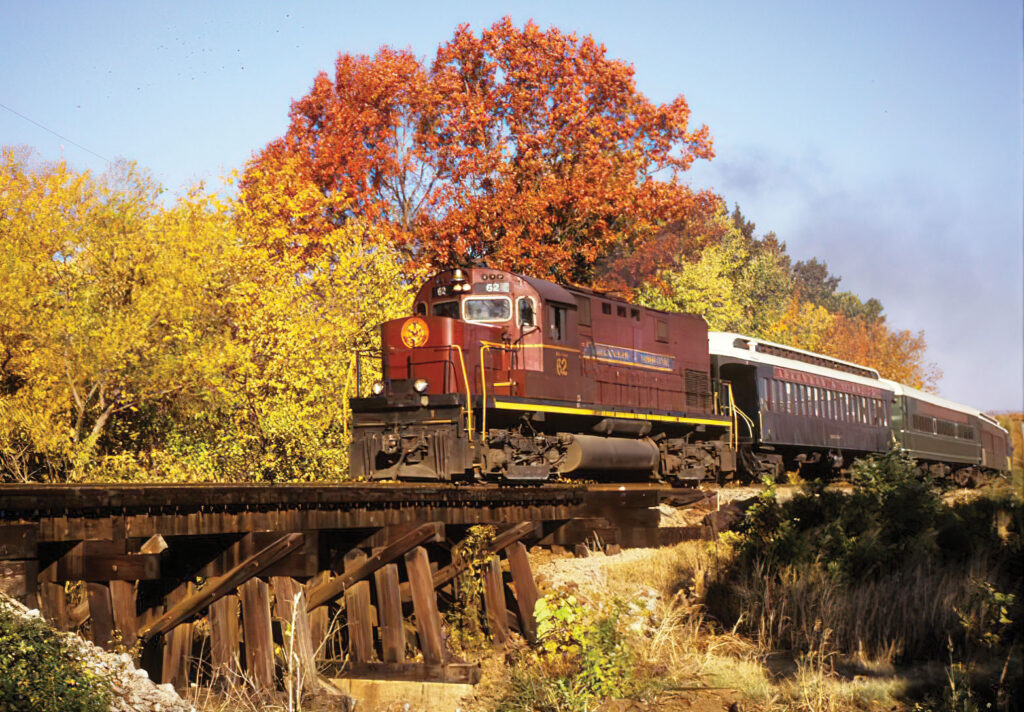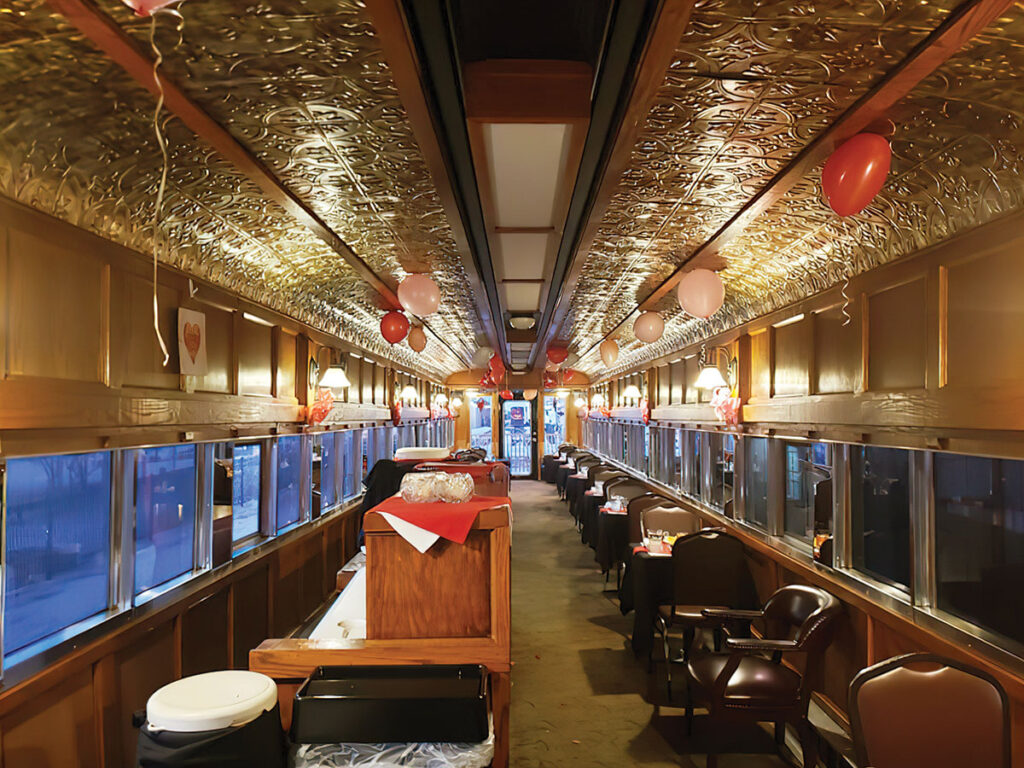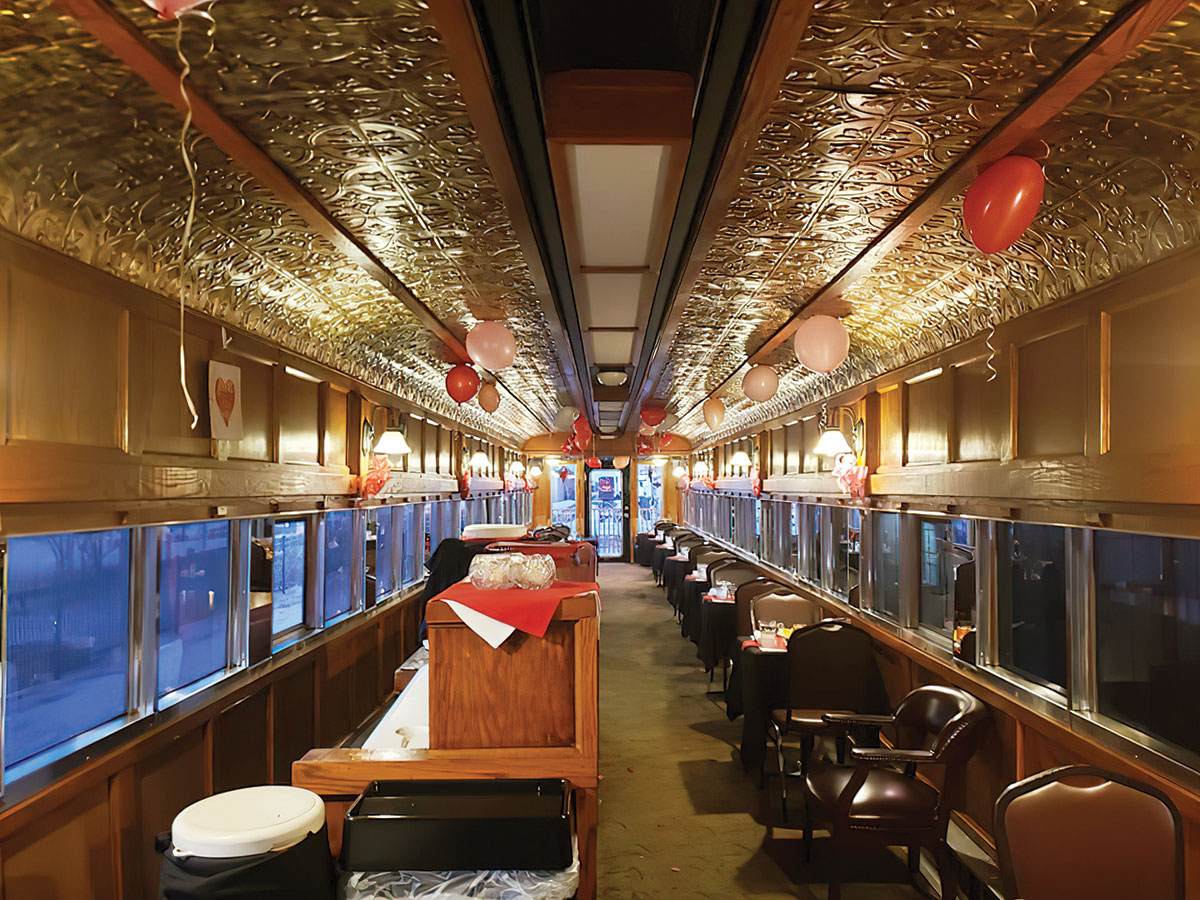
Privately-owned railroad gives passengers a unique look at the Ozarks
When railroads gained prominence in the 1800s they ushered in the industrial revolution. Nowadays it’s hard to imagine how the railroad system totally changed the face of America.
Yet, that is the goal of the Arkansas & Missouri Railroad (A&M). The owners and operators of the 35-year-old railroad want to transport passengers back in time before the advent of cell phones, social media and planes.
The main job of the Arkansas & Missouri Railroad is freight transportation. It delivers grain and grain products to Tyson Foods, George’s, Cargill and OK Feeds. They also transport frozen poultry from Northwest Arkansas to markets all over the world.
Yet, it may be A&M’s side hustle that the owners take the most pride in, according to Brenda Rouse, operations manager for Excursion Train. The Arkansas & Missouri Railroad is one of the few commercial lines left in the United States that operates both freight and passenger service.
The company decided more than three decades ago that they wanted to go into the excursion business as well.
“The Arkansas & Missouri Railroad was established in 1986 as a Class III Railroad operating a 150 mile route from Monett, Mo., to Fort Smith, Ark.,,” A&M officials stated. “A&M’s corporate headquarters is located in Springdale, Ark.; major operations are based there and Fort Smith.”
The tracks the A&M railroad use today were once part of the old St. Louis-San Francisco (Frisco) Railway system, which was built in the 1880s.
At various locations, a rail researcher can decipher the old bones of intersecting railroads or branches long since abandoned, such as the Cassville and Exeter (Mo.) Railroad and the Frisco’s Fayetteville to St. Paul (Ark.) branch.
“We have a transportation Museum here in Springdale,” Brenda said. “It’s the JRM Transportation Museum. In the museum, we have a collection of old lanterns, conductor hats. We have a pretty good collection of railroad China that they would have used back in the day when railroad travel was romanced. Model trains for the kids. We also promote railroad safety. That is one of our biggest missions of the museum I railroad safety and education.”

But the true history lessons take place once passengers onboard the trains and take a tour on the railroad tracks. The passengers ride in refurbished antique passenger or parlor coaches.
The normal schedule includes a Springdale, Ark., to Van Buren, Ark., round-trip, with a Van Buren to Winslow, Ark., round-trip during the layover.
However, other trips are operated including short Operation Lifesaver, Santa trains and trains for special community events. Seating is available in restored commuter coaches, a parlor car, dome, dining car and caboose.
The excursions have become popular not just for historians looking to recapture a glimpse of the past, but also for a variety of different groups.
“We draw from a minimum five-state area. We have people coming as far away as the UK, Ireland. They come from all over,” Brenda said. “We have several rail groups and photography groups that come in to photograph our line and locomotives. We have cycling groups that will ride their bikes one way, like Springdale to Van Buren, then they will catch the train back.”
It’s the scenery of nearly untouched land that makes for the best visual presentation.
“Some of the scenic part of the tour is a quarter-mile tunnel,” Brenda said. “There are several high trestles that are more than 125 feet above the ground.”
Along the way, passengers will get a history tour from a period-dressed conductor who will point out historical landmarks.
One of those landmarks had a special connection with the previous owner of the A&M railroad, J. Reilly McCarren.
According to Brenda, McCarren was passionate about trains. He was the majority owner and chairman of the Arkansas & Missouri Railroad Co., as well as the majority owner of Allied Enterprises Inc., which together with A&M provides rail, trucking, warehousing, packaging, and railcar leasing services.
“There was an unmarked gravesite along the track when they were building the railroad back in the 1800s. It was the site of a smallpox epidemic,” Brenda said. “Once it was discovered, we put up a couple of crosses. Our owner was diagnosed with cancer. He told his wife when he passed, he wanted his ashes to be spread out there by those railroad workers.”
McCarren died in 2015 at the age of 58. According to Brenda, before his death, he also told his wife Caren Kraska, “you can sell the railroad or you can go down there and take it over.”
Caren decided to keep it and has been running it ever since, which is why they put such a special emphasis on the excursion trains.
“When I first started, we were only running 6,000 people a year and only running six months out of the year,” Brenda said. “I’ve been with the railroad 21 years and we are now running 12 months out of the year and my max capacity ridership has been up to 40,000.”







